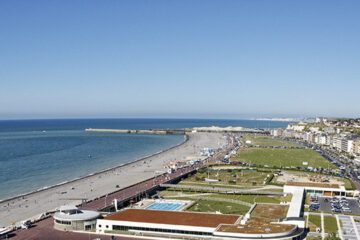Sommaire
Volume deformation is manifested by a change in the appearance of the components of the photo that are increasingly stretched towards the edges of the image. It is characteristic of a wide-angle lens usage and increases with the decrease of the focal length used. We usually start noticing below 28mm (24×36 format) and it becomes more and more visible later.
This distortion is cumulative with the other deformations related to the use of the wide-angle lens
* The distortion which is a specific characteristic of the lens by its construction
* The leakage effect of the vertical and horizontal planes depending on the rules of the perspective
* The choice between Diagonal and Horizontal / Vertical corrections determines the visual success of the correction depending of the photo content.
* The volume deformation is not linear. Null in the center of the image, it becomes more and more sensitive by moving away to become maximum on the edges of the image. The correction obviously takes it into account.
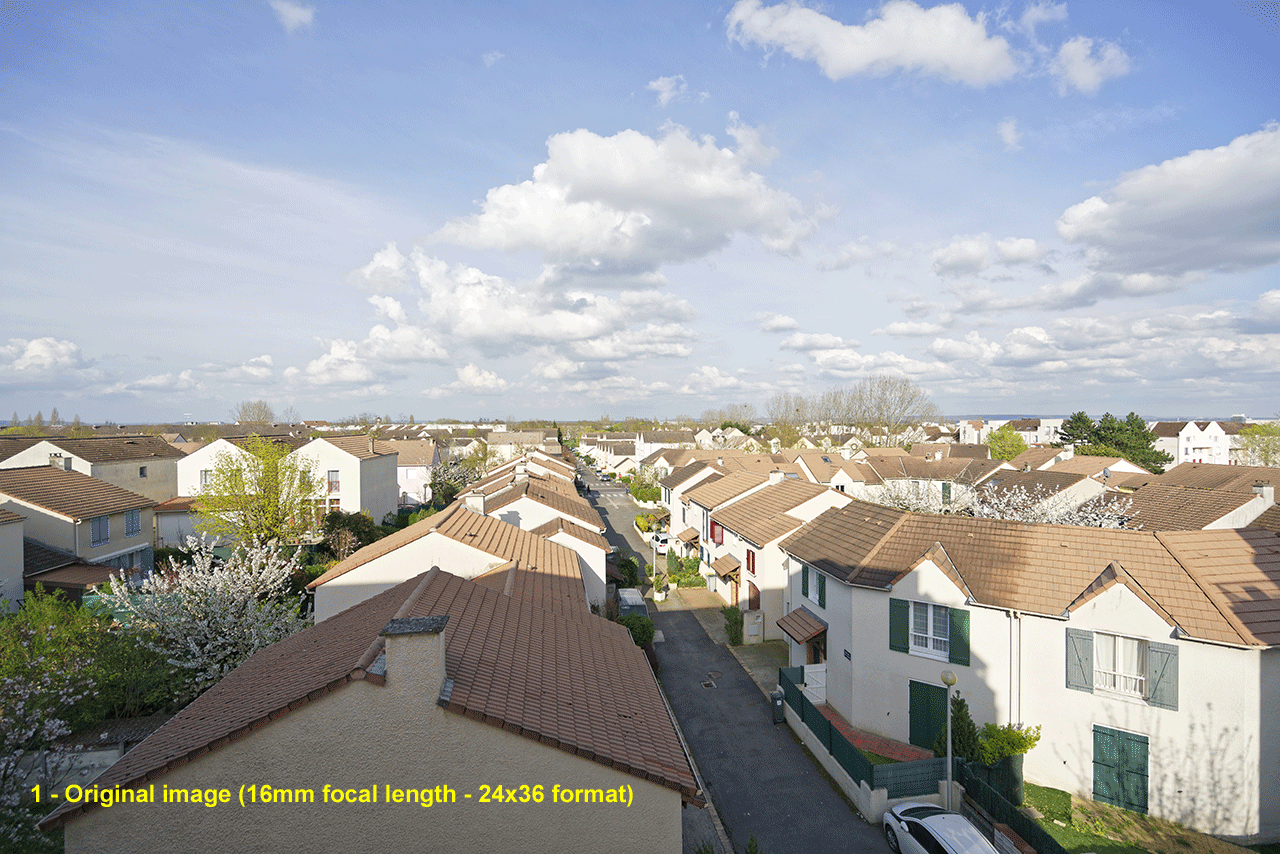
Automatic correction
The Auto correction is the normal operation of this tool. ViewPoint directly assigns the correct correction value. It can be refined with the sliders but it is rare to return to it.
Manual correction
If there is no EXIF metadata (or if they are not correctly filled in), ViewPoint indicates it in the palette “Volume Deformation”. ViewPoint applies a standard correction.
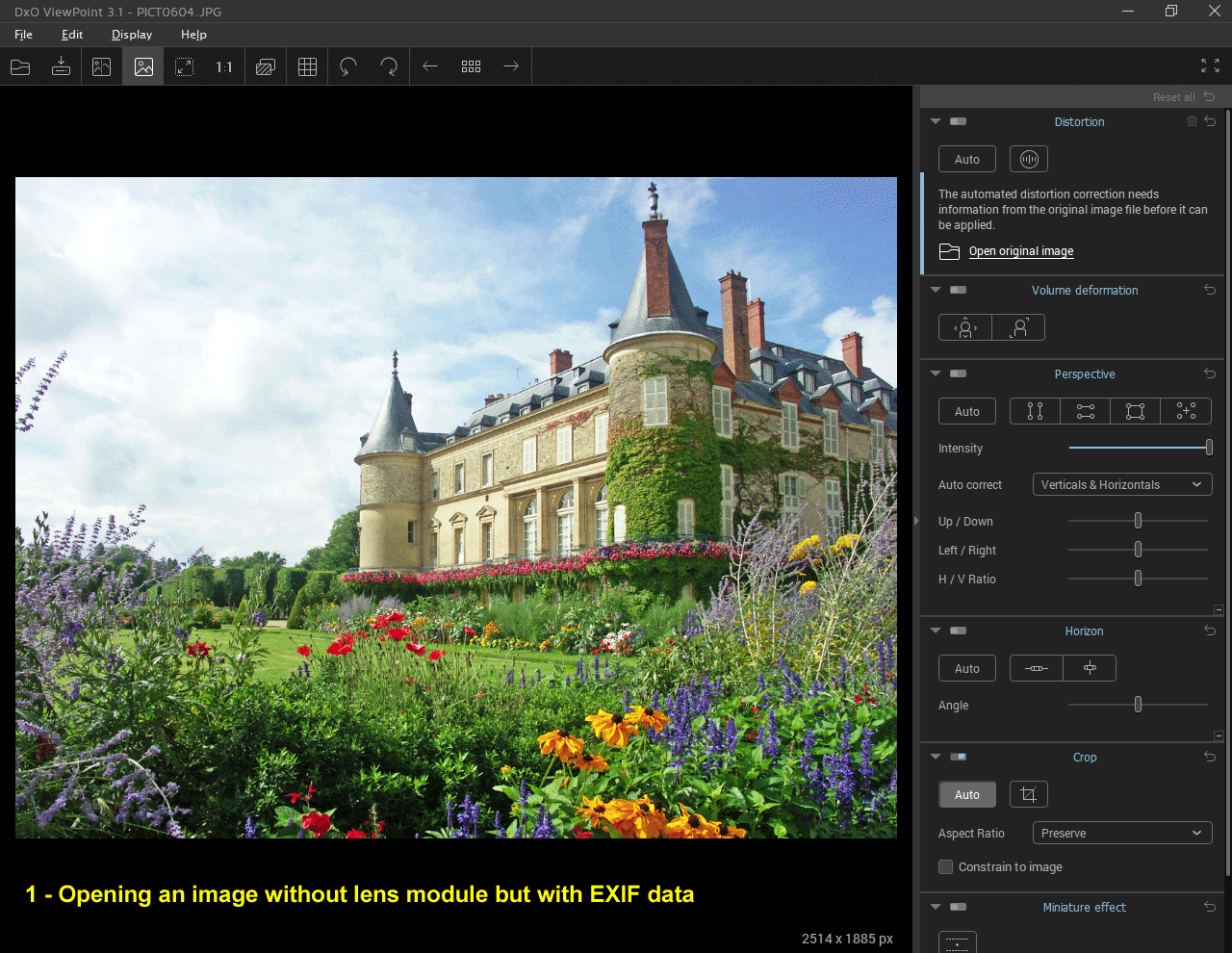
Correction by the Diagonal
This is the most accurate. It starts from the center of the image with an amplitude that grows as it moves away from it. A representative case is the selfie photo..
It is particularly adapted to the subjects having spherical volumes in the broad sense (characters, heads, etc.). A representative case is the selfie photo.
On the other hand, it distorts the straight lines by bending them. The deformation is maximum for the lines along the edges of the frame.
– In palette “Volume deformation” – tool type “Diagonal”
The correction is automatic for the cases defined above.
The default value (150) is a complete correction. It can be decreased for a more natural rendering.

Correction type Horizontal / Vertical
The correction settles the image from the median vertical axis towards the edges for landscape format pictures (along the horizontal axis for portrait format pictures).
There is no curvature of straight lines. It is preferred for urban photography, monuments, interiors of buildings, etc.
It is not exact but better accepted on these types of subjects.
– In palette “Horizontal / Vertical” type “Volume distortion”
Here again the correction is automatic if ViewPoint can access the EXIF data.
– ViewPoint automatically presents the right choice according to the orientation of the original image.
In the case of a wrong proposition, the values 100 and 0 must be exchanged.
The values displayed are 100 by default for the selected correction direction (horizontal or vertical) and 0 for the other direction. This is an optimized correction for the majority of situations.
It is preferable not to modify (or very little) the correction to zero because of the antagonism between the two directions of adjustment.
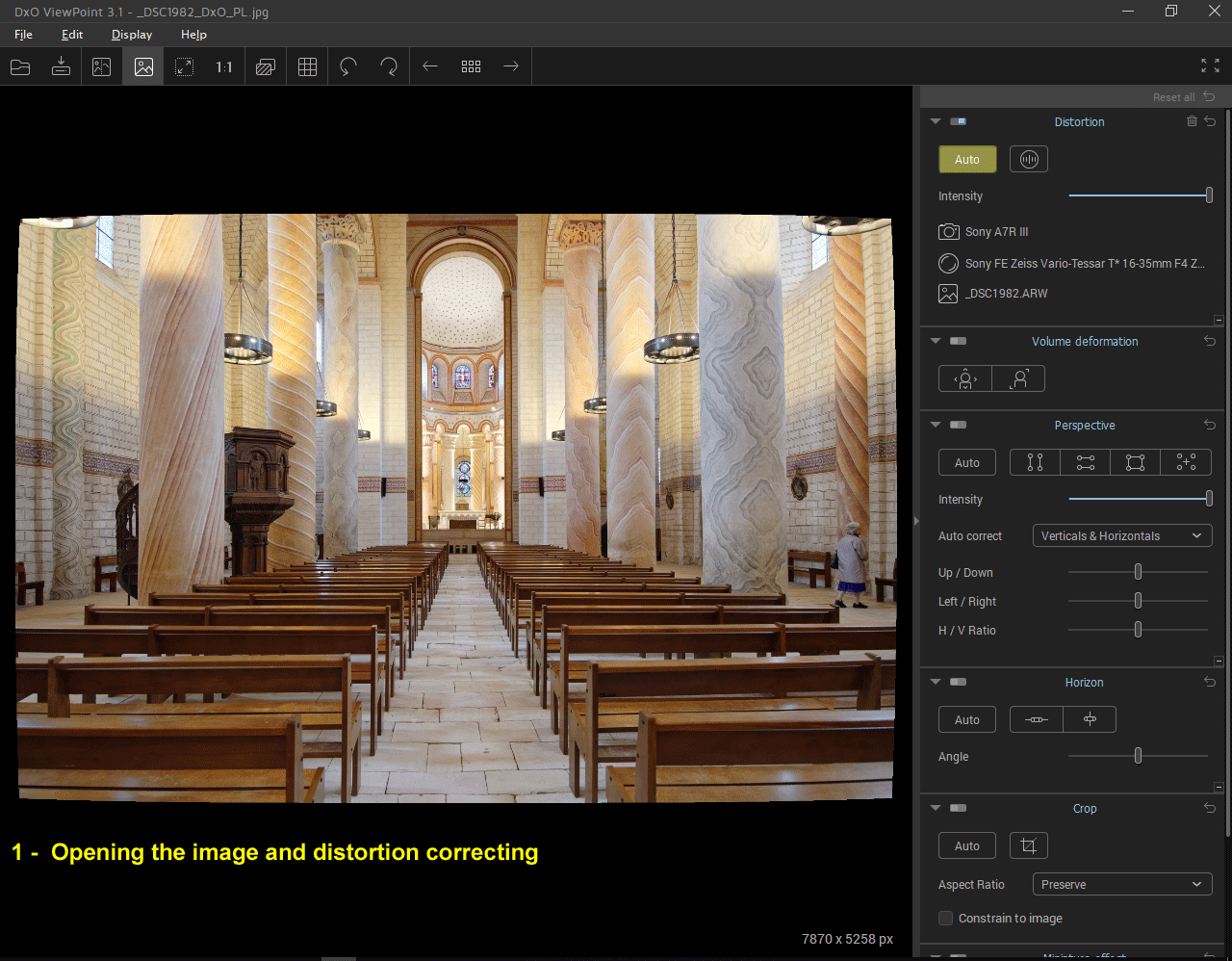
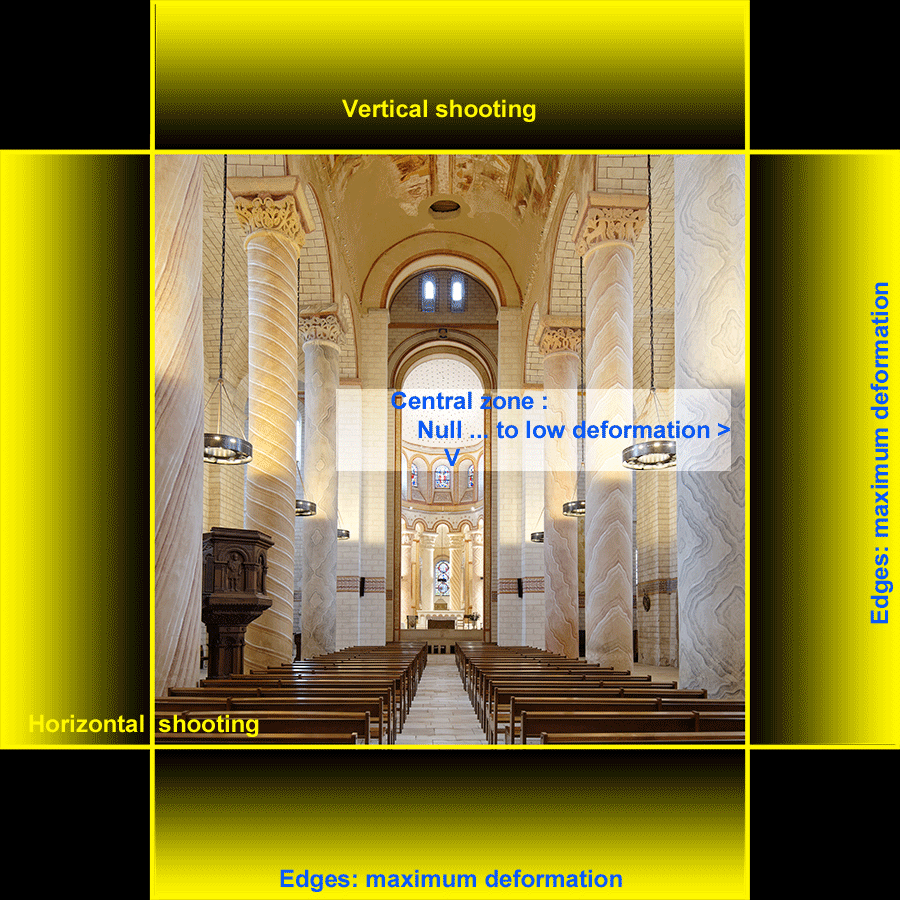
Application of volume corrections to an image
We often address the volume distortion correction at the end of the process. This position is well suited for images requiring diagonal correction. On the other hand, those with a Horizontal / Vertical type of correction are often subject to a correction.
This kind of correction is, in fact, a prerequisite for horizon and perspective corrections.
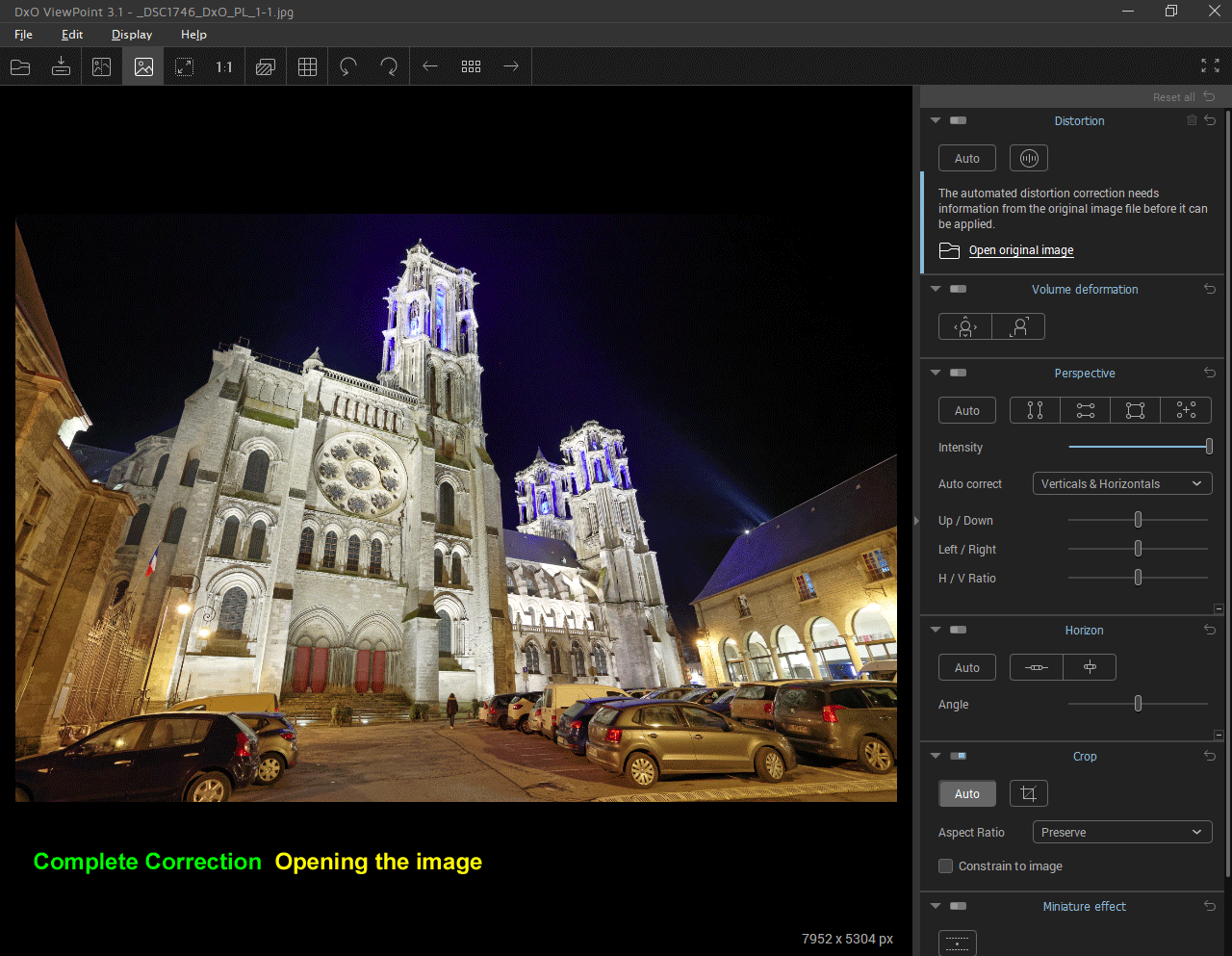
TuToDxO.com – All rights reserved – tous droits réservés.

